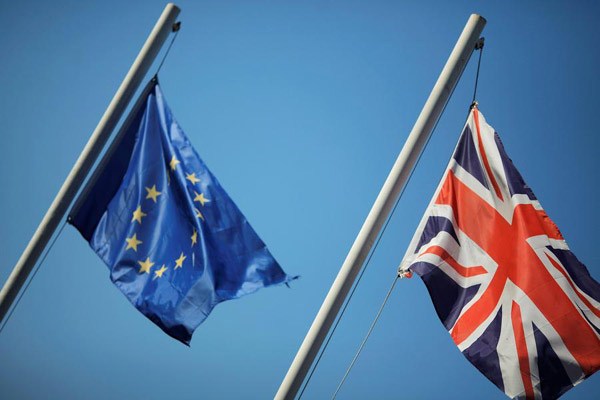 |
|
The Union Jack (R) and the European Union flag are seen flying outside The Rock hotel in the British Colony of Gibraltar, May 19, 2016. [Photo/Agencies] |
On Thursday, Britons will vote for or against UK's remaining in the European Union. These are the milestones which have led to the creation of a single market, grouping 500 million citizens from 28 countries, and hosting some of the world's most advanced economies.
1. Birth of Founding Treaty
After the Second World War(1939-45), France, West Germany, Italy, Belgium, Luxembourg, and the Netherlands signed the Treaty of Paris, establishing the European Coal and Steel Community (ECSC), which subsequently became part of the European Union. This founding treaty of the European Community, came into force on 23 July 1952 and expired on 23 July 2002, exactly fifty years after it came into effect, it was seen as producing diplomatic and economic stability in western Europe after the Second World War. Some of the main enemies during the war were now sharing production of coal and steel, the key-resources which previously had been central to the material side of the war effort.
2. Treaties of Rome
The Rome treaties establish the European Economic Community (EEC) and the European Atomic Economic Energy Community (Euratom). The first meeting of the Council of the EEC takes place on 25 January 1958 under the chairmanship of Victor Larock, the Belgian Foreign Affairs Minister.
3. Enlargements of European Union
On January 1st, 1973, Denmark, Ireland and the United Kingdom join the community, raising the number of member states to nine after the original six countries established European Economic Community. Membership of the EU reaches double figures when Greece joins in 1981. Spain and Portugal become EU members on1986 January 1st.
On January 1st, 1995, Austria, Finland and Sweden join the EU and the 15 members now cover almost the whole of western Europe. And on May 1st 2004, ten countries, including the Czech Republic, Estonia, Cyprus, Latvia, Lithuania, Hungary, Malta, Poland, Slovakia and Slovenia, joined EU, which is the EU's largest single enlargement in terms of people and number of countries.
Bulgaria and Romania join the EU on 2007 January 1st and Croatia becomes the second country from ex-Yugoslavia to join the EU, after Slovenia, on July 1st, 2013. The EU now has 28 member states.
4. Evolution of European summits
Following the Copenhagen summit in December 1973, which made provision for summits to be held whenever necessary, the Paris summit of December 1974 creates the European Council. It was created with the intention of establishing an informal forum for discussion between heads of state or government. First meeting of the European Council in Dublin on 11 March 1975.
Since 1996, the European Council has met at least four times a year. Before that, only two meetings a year were required. And since October 2003, all formal European Council meetings take place in Brussels.
In December 2009, for the last time, the European Council meeting is chaired by a president or prime minister of the member state holding the rotating Council presidency.
At an informal meeting in Brussels on 19 November 2009, EU heads of state and government unanimously agree to appoint Herman Van Rompuy as the first permanent President of the European Council. The president chairs European Council meetings.